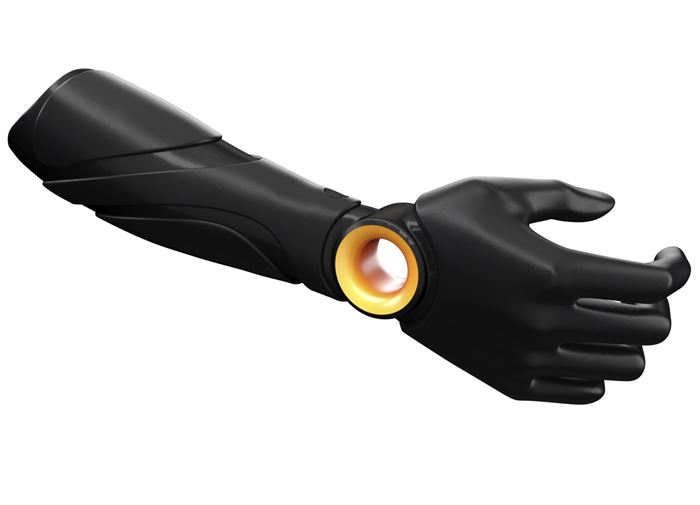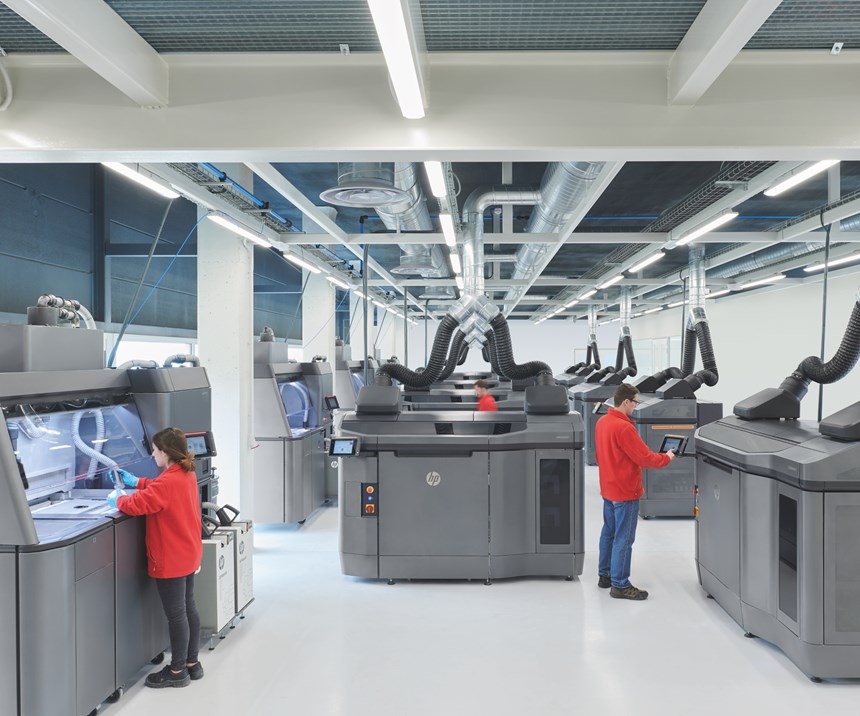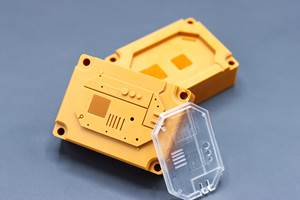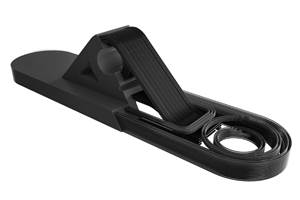3D Printing Enables Customizable Medical Prosthetics
Glaze Prosthetics produces customized prosthetics using HP’s Multi Jet Fusion technology.
One of the most exciting developments in manufacturing is shifting the application of 3D printing from strictly prototyping to actual production manufacturing. In doing so, the process is creating new opportunities that would have been impossible in the past. Among those taking early advantage of this trend are entrepreneurs with start-up companies that are using additive manufacturing (AM) to print parts at prices competitive with traditional manufacturing. Some are using AM technology to create innovations in medical devices that help transform lives. Case in point: creating customizable prosthetics.
Founded in 2017, Glaze Prosthetics in Krakow, Poland, claims to be the only company in the world that allows patients to choose the model, color and finish of their prosthetics … and even design and order the products online. The ability to offer such options is partly due to Glaze Prosthetics using HP’s Multi Jet Fusion technology, which launched in 2016. The flexibility of this 3D printing technology allows Glaze Prosthetics to continue pushing boundaries in this market by introducing new features to its prosthetic arms, such as a Bluetooth speaker and a power-bank option.
Piotr Sajdak, co-founder of Glaze Prosthetics, says that prosthetics heretofore have burdened by high cost and typically have been heavy, hard to use and not aesthetically pleasing. Sajdak got involved with the company because he loved the idea that 3D printing can give so many different options to users of prosthetics. And he became the first user of the Glaze system himself.
“We have so many people on the planet—short and tall, small and larger people—so imagine you only offer a couple different sizes,” he says. “3D printing gives the opportunity to make customization for any patient.”
After the first year of trials, Glaze got in touch with HP last year and the start-up decided to push its production from Selective Laser Sintering (SLS) to HP’s Multi Jet Fusion. This switch lets Glaze produce parts that were lighter and less expensive, but also better. The prosthetics are produced primarily from nylon 12 powder.
“3D printing gives the opportunity to make customization for any patient.”
“Glaze Prosthetics is doing an incredible work in the healthcare industry to enable people with missing upper limbs to express their creativity and personality through their prostheses,” says Ramon Pastor, v.p. and general manager of HP’s 3D Printing Business.
“They are using Multi Jet Fusion technology to create lighter, better fitting, personalized upper limbs that make people’s lives easier and more comfortable. I personally love how they embrace uniqueness and personality through their project. It’s much more than prostheses; it’s about patients with these disabilities regaining confidence and not seeing their disability as a weakness, but as a uniqueness.”
The Process
The first step in the process is taking a patient’s measurements, which are then run through the software to prepare all the files to be printed. These files are printed on the HP Multi Jet Fusion 3D printers, which provide dimensional accuracy and repeatability. Glaze outsources the printing but finishes the prosthetics in-house.
The way Multi Jet Fusion “thermal inkjet technology” works is by jetting HP functional agents using HP printheads, which selectively fuse the plastic powder with thermal energy. Pastor emphasizes that the part control and accuracy is executed at voxel level. Voxels are volumetric pixels, the elemental cubic unit that composes a 3D-printed object; and HP’s technology has the capacity to specify the properties of each voxel, defining a 3D part point-by-point through a series of fusing and detailing agents.
“Thanks to voxel-level control and the limitless design possibilities of additive manufacturing, we have enabled applications that were previously unthinkable,” Pastor says. “We have also improved part performance and reliability by producing engineering-grade parts with optimal mechanical properties, more flexible, versatile and customizable, using less material.”
HP Jet Fusion printers recycle almost 100% of the unused material during printing without compromising its quality or properties. This means that the next set of parts printed will always be composed of both new material and recycled material. Nothing goes to waste, Pastor says.
“Thanks to voxel-level control and the limitless design possibilities of additive manufacturing, we have enabled applications that were previously unthinkable.”
Adam Komarowski, R&D manager for Glaze Prosthetics, says Multi Jet Fusion also gives the firm an opportunity to create different sizes such as a new line of prosthetics for children.
Another key factor, Sajdak says, is that the overall process for Multi Jet Fusion costs much less. “We can create really good products that are affordable for everyone,” he says. “Price is the most important thing to offer for these people—affordable solutions that will be functional. Glaze itself is a elegant design and stylish, but also provides function.”
The World Health Organization (WHO) estimates there are about 30 million amputees around the world — four out of five live in the developing world, and many have no access to prosthetics.
Glaze is now exploring providing 3D-printed prosthetics for patients in those developing areas, such as India or Africa. “Everything we can do is thanks to HP,” Sajdak says.
3D Printing’s Impact
Pastor of HP says that when you consider the journey to the fourth industrial revolution (Industry 4.0), the basic design and manufacturing process hasn’t fundamentally changed over the past 100-plus years. In fact, not only have the processes not improved but they’ve put a substantial strain on our natural resources, pushed production farther from the consumer, and constrained design flexibility and customization.
“We now are seeing innovation take hold and accelerate a massive transformation of traditional manufacturing, including advanced analytics, artificial intelligence and 3D printing,” he says. “Digitization, a more rapid advancement of product capabilities, and breakthrough economics are critical to this disruption.”
Pastor foresees the factory of the future to be built on rapid shifts in technology—including machine learning, industrial IoT or Big Data—which will require new skill sets and will make manufacturing jobs much different from those of the past. Engineering and design roles will be able to take full advantage of more automated environments, especially with increased utilization of 3D printing, which is expected to escalate the pace of product creation and lifecycles. With a shorter time to market, Pastor says design engineers will need to help push products through to production and “un-learn” constraints of traditional manufacturing that are no longer constraints for 3D printing.
“The democratization of 3D printing design and manufacturing will unleash new possibilities for innovative small- to medium-sized product-development teams and design businesses, entrepreneurs, and universities and research institutions around the world, as well as enable the big factories of the world to become fully digital and rethink how, where and when they manufacture,” Pastor says.
Related Content
420 Stainless Steel Now Qualified With TrueShape 3D Printing Technology
NPE2024: Mantle's additive manufacturing technology is designed for precision tooling.
Read MoreMake Every Shot Count: Mold Simulation Maximizes Functional Parts From Printed Tooling
If a printed tool only has a finite number of shots in it, why waste any of them on process development?
Read MoreAdditive Fusion Technology Optimizes Composite Structures for Demanding Applications
9T Labs continues to enhance the efficiency of its technology, which produces composite parts with intentionally oriented fibers.
Read MoreFreeform Injection Molding Eases the Path to Medical Device Product Testing
A development and manufacturing service provider is using dissolvable molds to build injection molded silicone prototypes.
Read MoreRead Next
For PLASTICS' CEO Seaholm, NPE to Shine Light on Sustainability Successes
With advocacy, communication and sustainability as three main pillars, Seaholm leads a trade association to NPE that ‘is more active today than we have ever been.’
Read MoreBeyond Prototypes: 8 Ways the Plastics Industry Is Using 3D Printing
Plastics processors are finding applications for 3D printing around the plant and across the supply chain. Here are 8 examples to look for at NPE2024.
Read MoreMaking the Circular Economy a Reality
Driven by brand owner demands and new worldwide legislation, the entire supply chain is working toward the shift to circularity, with some evidence the circular economy has already begun.
Read More


















 (2).jpg;maxWidth=300;quality=90)














